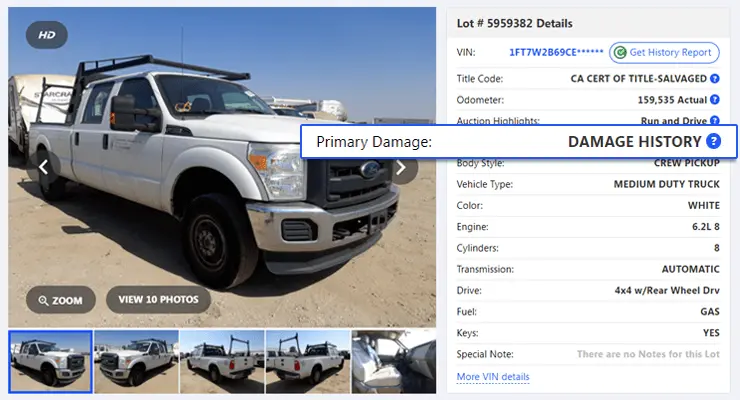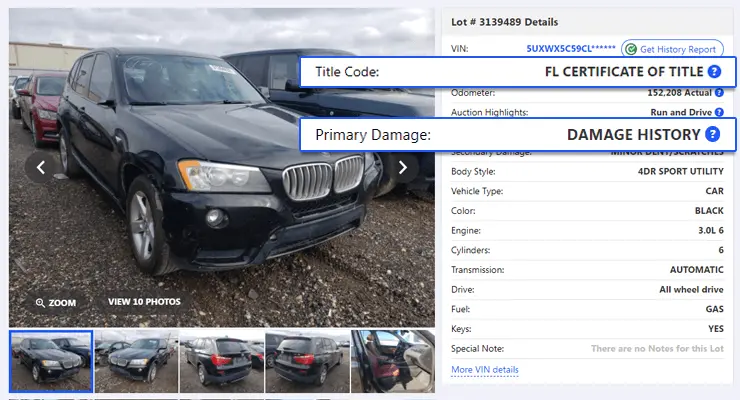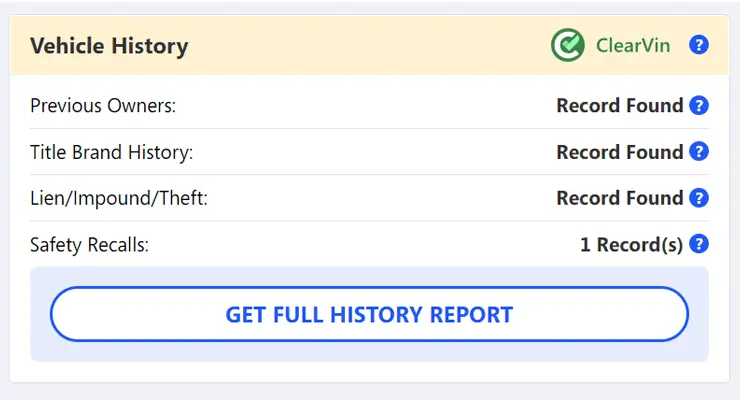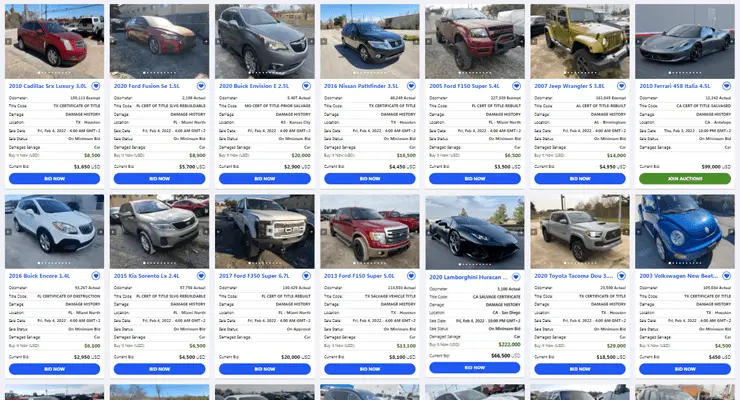Damage History: What Should You Know

We know that finding your dream car can be time-consuming. Imagine how bad it was during the era of classifieds. Nowadays, people look for cars online. Have you finally found a perfect auto on the Internet? Is sealing the deal only a matter of time? Sounds perfect, we agree. What if you’ve fallen in love with a vehicle and noticed an unfamiliar line that reads like ‘damage history?’ Don’t worry! It shouldn’t stop you in your tracks. We’re zeroing in on damage history and its meaning on AutoBidMaster online auctions.
What Is Damage History?

This is a relatively rare damage code. Vehicles labeled with ‘damage history’ have sustained damage of any nature and underwent repairs before ending up at an auction yard. After repairs, a car is put for sale through auction. Typically, an auction assigns two damage codes to each vehicle. They indicate the already known or previously reported damage, but NOT its extent. Neither of these two codes can have more significance than the other.

Damage history isn’t always equal to a salvage title. Not all vehicles with such a label are deemed a total loss. However, inspecting a car yourself or hiring a third party is always the best plan when you want to be on the safe side.
Types of Damage in Damage History Cars
We learned the damage history Copart meaning. Now let’s take a look at the types of damage that a car could’ve had before it got this label. Cars with damage history have sustained damage once upon a time and they were repaired. So, let’s take a look at what type of damage they could have suffered in their previous life.
Collision Damage: Collision damage is probably the most common type of damage that a car can have. Cars end up in an accident and they are repaired.
There can be front-end, rear-end, side-impact, and rollover damage.
However, if the damage is too small, it is often left unreported by the owner and the owner sorted the damage by himself.
If the damage was more severe, the car would have been fixed and would get the damage history label.
Water Damage: Water damage is one very common occurrence, especially in areas where there are floods.
For example, Florida or Louisiana. There are big storms that often flood cars and if a car gets flooded to a certain level it will get a salvage title.
These cars can be a bit risky. That’s why we advise learning the vehicle damage history report and seeing how well flooded this car was if that was the case.
The risky thing with these cars is the fact that the electrical systems can seriously malfunction and you can face some electrical gremlins on a daily basis. That’s why flooded cars are definitely not one of the best purchases out there.
Fire Damage: Fire-damaged vehicles are also very common these days. Cars can catch fire and end up damaged in the process.
Although fire damage can sound very serious, in many situations it is not since the fire can take a very small portion of the car. For example in the engine bay.
Fixing this damage is rather easy because, in many cases, only a few wires were part of this incident.
However, cars with serious fire damage are extremely difficult to repair, especially if the fire enters the cabin.
Theft Recovery: Cars can also end up stolen and then retrieved. These cars get the theft recovery name.
However, sometimes these burglars can end up damaging the exterior and interior of the car.
If that happens, the car will get repaired and will have a damage history label in the report.
These cars with Copart damage history are often potentially a good deal because this type of damage is easily fixable.
Hail Damage: Hail damage is also a very common reason why a car can have damage history.
Hail rains a lot in states like Oklahoma or Kansas. A ton of cars get damaged every year by this natural disaster. These cars end up fixed and get the damage history code.
If a car had this type of damage, it shouldn’t scare you since this damage is purely cosmetic in 99% of the cases.
Pros and Cons of Buying Damage History Cars
Pros
Let’s start with the pros of buying damage history cars. And the biggest pro is definitely the cost savings that you can get when getting such a vehicle.
These vehicles are far cheaper compared to clean title cars and you can get them for a fraction of the cost.
For example, if you had a childhood dream car, now it is time to obtain this vehicle and rebuild it by yourself in your garage.
This is especially good if you are a car guy. This way you can enjoy your free time and also learn something along the way.
Working on cars is a great way to learn more and understand how the mechanics work. This way, you can even become a mechanic one day.
In addition to this, salvage title cars are often good for flipping. If you are very good at picking deals, you can make a profit at the end of the day.
Cons
There are also cons of this type of trade. These are cars that often have a suspicious history. So, obtaining a report from ClearVin is a must.
Especially if this is a car with a history damage label. This means that the car crashed at least once before it crashed the second time and ended at the salvage auction.
This is why you need to be really aware of these cars and get yourself a report.
Another consideration that you need to take is definitely the insurability of these cars. There are insurance companies that work with these cars but they will definitely charge you a premium because of the risk involved in insuring such a car.
And last but not least is the lower resale value. Cars with salvage titles often cost 20% less compared to clean title vehicles.
Why You Shouldn’t Be Afraid of Buying A Car With Damage History
A cost-savvy buyer can take a damage history label as an opportunity. Why? Because cars with damage history lose a hefty chunk of their initial, pre-accident value. Still, you have to be cautious with such vehicles. Verify their condition, get the maximum amount of information and reasons behind the car damage history, and how it was repaired. Inspection will help you determine the issues (if any) that can spoil your day in the long run.
Check A Car’s Damage History

In the age of technology, getting information about a vehicle is pretty simple. And we’d like to recommend you getting a ClearVIN VIN Check Report that includes data from different sources and provides the maintenance records, car title history, auction sales, and recalls if there were any. Furthermore, car dealers can also make use of the DMV vehicle records presented in car history reports from our partner. So, verifying a car’s damage history is a no-brainer with ClearVIN. You can run a free VIN check and obtain the most accurate picture of the vehicle’s past. Also ClearVin offers fast and easy access to the original Ford Window Sticker by VIN.
Final Words

Buying a car sight unseen isn’t that risky anymore. Even the label ‘damage history’ shouldn’t discourage you from getting a nice set of wheels. Nevertheless, we have more than 100,000 other options if such cars aren’t for you. Affordability, transparency, and simplicity are the factors our customers appreciate. Become one of our members by signing up, uploading a copy of your government-issued ID, and placing a refundable security deposit. Don’t forget to pick a membership, and then you are ready to bid! At AutoBidMaster, we’re happy to consult you on any questions regarding the auction, bidding, shipping, and anything in between. It means you can reach out to us at: +1 (503) 298-4300 (4:00 AM – 4:00 PM PST, Monday through Friday). Alternatively, you can fill out our online form to contact us or email at: hello@autobidmaster.com. Happy bidding!
Damage History Cars FAQ
Now let’s answer some frequently asked questions.
What is damage history?
Damage history is a label that notes that the car was involved in an accident before it ended up in the salvage yard.
What is worth noting is that this was not the most recent accident and is not the reason the car ended up on the lot. This type of damage occurred years before. The car crashed or had other types of damage and was fixed.
These cars are riskier compared to cars with no previous damage because damage history cars were involved in at least two accidents.
What does damage history mean on Copart?
Damage history is a label that a car with previous damage gets when it ends up in the salvage yard for the second time.
This means that the car has a recorded history of damage. The type of damage this car suffered can be different from car to car. It can be crash history, theft recovery, hail damage, etc.
This is why you need to learn more about this car and see what type of damage it previously had. You can do this by issuing a report from ClearVIN or Carfax. In this report, the damage history will be listed and you will have a clear idea of what kind of damage the car previously had.
Salvage history meaning?
Cars with salvage history get the code damage history when they end up having damage for the second time.
This means that the car previously had damage and was fixed and ended up having damage again.
Cars like this are often riskier compared to cars with clean history with no previous damage. But this doesn’t necessarily have to mean that this is the case. This is why we advise that you get a report on that specific vehicle to see what type of damage the car previously had.
How safe is to purchase a car with damage history?
Yes, if you know what you are doing it is very safe to get a car with a damage history label. Even if the car had damage history, it means that this damage was fixed and this was not the reason why the car ended up in the salvage yard.
You can also issue a report on that specific car. With the report, you will learn more about what type of damage the car previously had.
How can I check the car damage history?
You can check the car damage history by issuing a report. There are plenty of services such as ClearVin or Carfax where for a certain amount of money you can issue a report on a particular VIN number.
If you are a member of AutoBidMaster, you also have a certain number of free reports on a monthly basis, depending on your membership type.
In this report, there is a lot of useful data, including damage reports about previous accidents. Based on this report, you can make a more informed decision about your future purchase.
What to pay the most attention to when looking to purchase a car with damage history?
When looking for a car and you see damage history, the thing you need to do is issue a report. Get yourself a ClearVin report based on the specific VIN of that vehicle.
In this report, a lot of information is available, including what type of damage this car suffered previously. This way you will potentially avoid problematic cars that have a ton of issues.
What damage history label vehicles to avoid?
We advise that you try to avoid cars that have been in a flood. Flooded cars are definitely the worst. The problems these cars have can last basically forever.
Common problems with these vehicles are electrical gremlins. There can be check engine light or different types of lights turned on all of the time. As well as constant malfunctions of the electrical systems.
Overall, owning such a car is a nightmare that you need to deal with on a day-to-day basis. Something that you definitely don’t want.
- The Advantages of Salvage Car Parts - November 3, 2025
- Buying Salvage Cars: What to Expect on Auction Day - May 22, 2025
- Is Buying a Hail Damage Car Worth It? A Detailed Guide - December 2, 2024